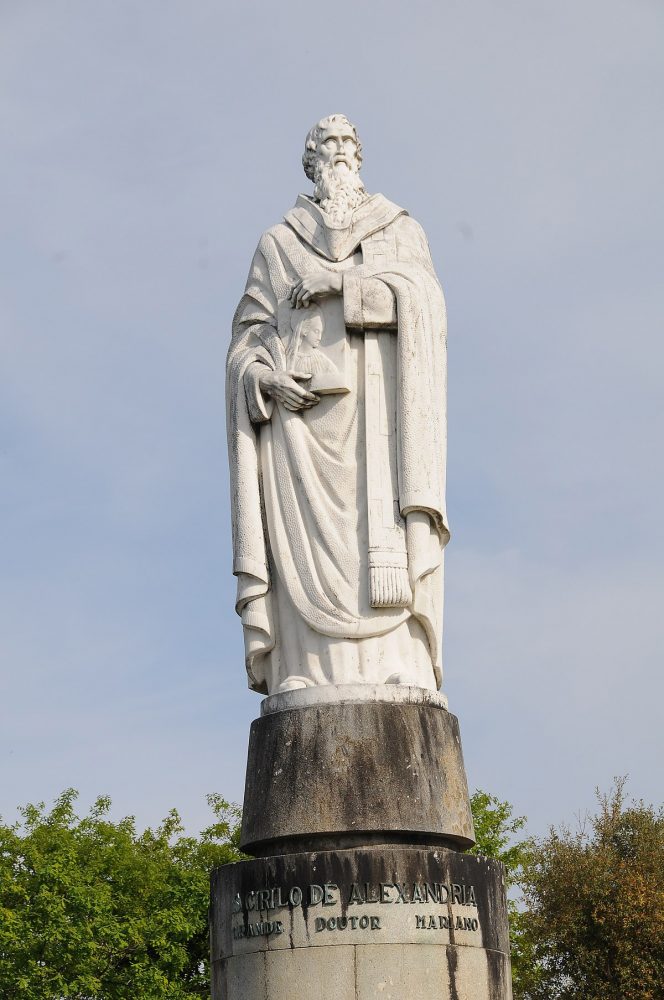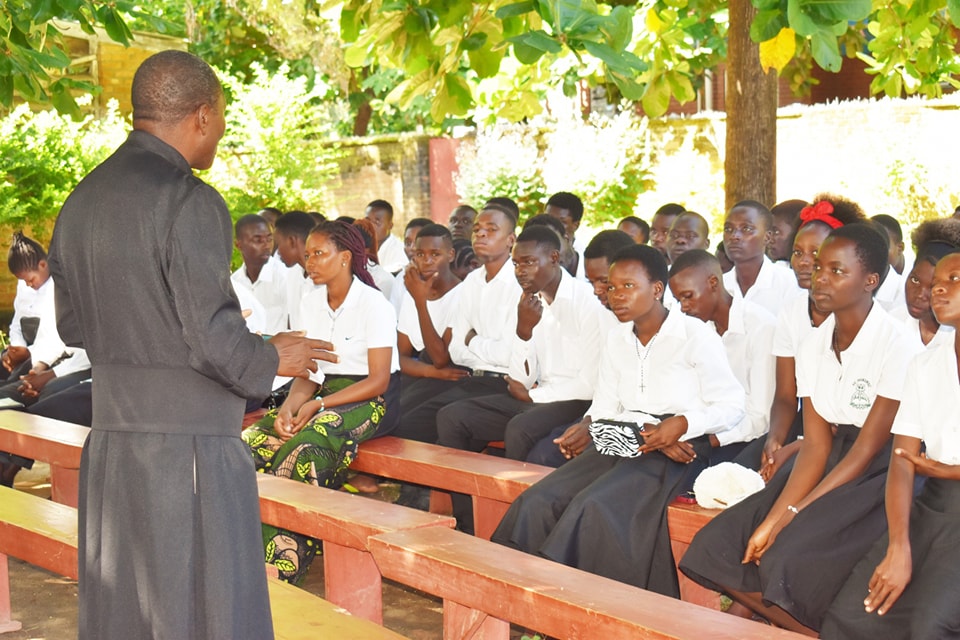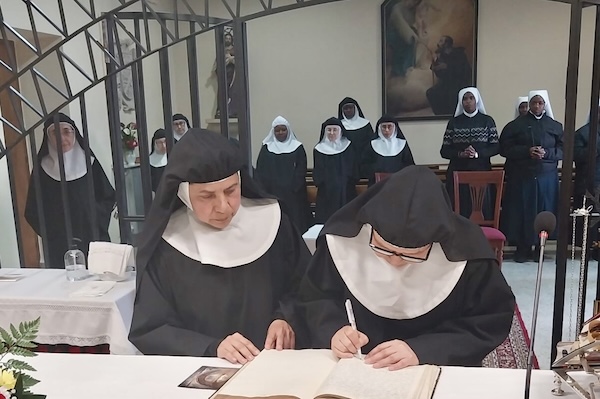Rev. José Mario O. Mandía
jmom.honlam.org
Today we will discuss Saint Cyril of Alexandria, who played a key role in confirming the doctrine that Mary is Theotokos (Mother of God) and not only Christotokos (Mother of Christ).
Cyril was a nephew of Theophilus, who became Patriarch and Archbishop of Alexandria in 385. Nothing much is known about his early life. “It is likely that Cyril was born in this Egyptian metropolis [Alexandria] between 370 and 380 AD, was initiated into ecclesiastical life while he was still very young and received a good education, both culturally and theologically” (Benedict XVI, General Audience, 3 October 2007).
In 403, Cyril accompanied his uncle Patriarch Theophilus to attend a synod in Constantinople which deposed the bishop of that place. The bishop was John Chrysostom! This fact shows us that the saints were not like innocent angels who never committed any mistakes or had any defects or prejudices. In fact, Cyril’s grudge against John Chrysostom lasted until 417 (cf. Quasten III, p. 117), ten years after John had died, when Cyril had a dream. Cyril was already a bishop by then, having succeeded his uncle Theophilus as Patriarch of Alexandria in 412.
“Once in a dream Cyril saw a wondrous temple, in which the Mother of God was surrounded by a host of angels and saints and John Chrysostom was among them. When Cyril wanted to approach the All-Holy Lady and venerate her, John Chrysostom would not let him. The Theotokos [‘Mother of God’] asked John to forgive Cyril for having sinned against him through ignorance. Seeing that John hesitated, the Mother of God said, ‘Forgive him for my sake, since he has labored much for my honor, and has glorified me among the people calling me Theotokos.’ John answered, ‘By your intercession, Lady, I do forgive him,’ and then he embraced Cyril with love.
“Cyril repented that he had maintained anger against the great Saint of God. Having convened all the Egyptian bishops, he celebrated a solemn feast in honor of John Chrysostom” (“The Reconciliation Between St Cyril of Alexandria and St John Chrysostom,” https://www.johnsanidopoulos.com/2010/06/reconciliation-between-st-cyril-of.html).
Saints are not sinless people. They, too, are sinners but sinners who know how to repent.
Relations between Alexandria and Constantinople soured again, however, when Nestorius became Patriarch of Constantinople in 428. Nestorius followed the Christian doctrine that Jesus Christ had two natures, human and divine. But, contrary to Christian belief, he also taught and preached that there were two persons in Jesus Christ: the Person of the Logos and the human person in which the Logos dwelt. It was the human person that Mary conceived, not the divine one. Thus, she could be called Christotokos (Mother of Christ) but not Theotokos (Mother of God) because she had nothing to do with Christ’s divinity.
Cyril wrote several letters to Nestorius, admonishing him about the need to teach the correct belief. In his Second Letter to Nestorius, he wrote: “It is essential to explain the teaching and interpretation of the faith to the people in the most irreproachable way, and to remember that those who cause scandal even to only one of the little ones who believe in Christ will be subjected to an unbearable punishment.”
In order to achieve this fidelity in doctrine, Saint Cyril recommends: “The most effective way to achieve this end will be zealously to occupy ourselves with the words of the holy fathers, to esteem their words, to examine our words to see if we are holding to their faith as it is written, to conform our thoughts to their correct and irreproachable teaching.”
In the same letter, he explained that “two different natures come together to form a unity, and from both arose one Christ, one Son….
“So he who existed and was begotten of the Father before all ages is also said to have been begotten of a woman according to the flesh….
“If, however, we reject the hypostatic union as being either impossible or too unfitting for the Word, we fall into the fallacy of speaking of two sons…. We ought not, therefore, to split into two sons the one Lord Jesus Christ…..
“For scripture does not say that the Word united the person of a man to himself, but that he became flesh. The Word’s becoming flesh means nothing else than that he partook of flesh and blood like us; he made our body his own, and came forth a man from woman without casting aside his deity, or his generation from God the Father, but rather remained as God while taking up flesh.” Cyril would repeat this teaching many times until his death on 27 June 444.
Nestorius appealed to the Roman Emperor Theodosius II to help resolve the conflict, so the latter convened the Council of Ephesus (the third ecumenical council or council of the whole Church) in 431. The council confirmed the teachings of the Nicene Creed and – contrary to Nestorius’ expectations – condemned Nestorius’ position. It accepted the twelve anathemas proposed by Cyril, the first of which reads: “If anyone does not confess that Emmanuel is God in truth, and therefore that the holy virgin is the mother of God (for she bore in a fleshly way the Word of God become flesh), let him be anathema.”


 Follow
Follow


